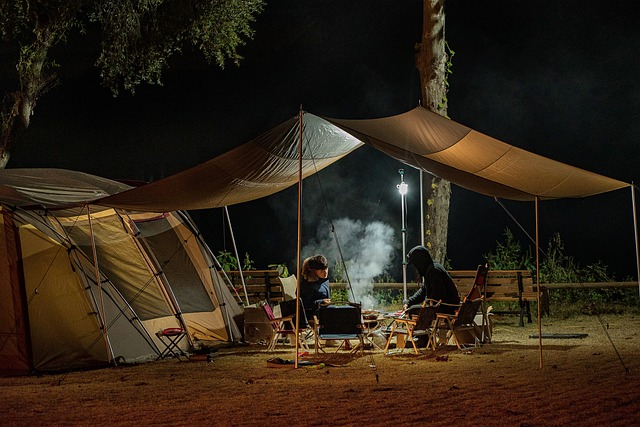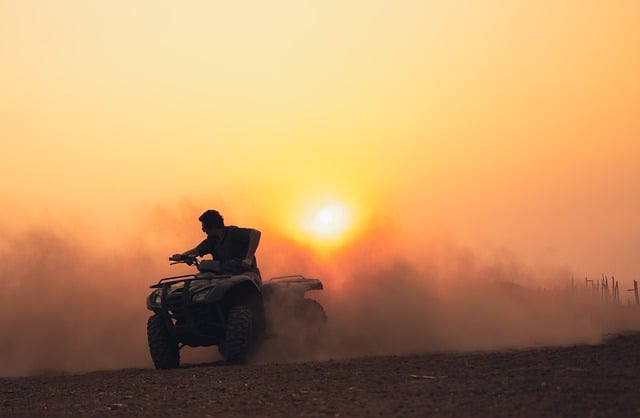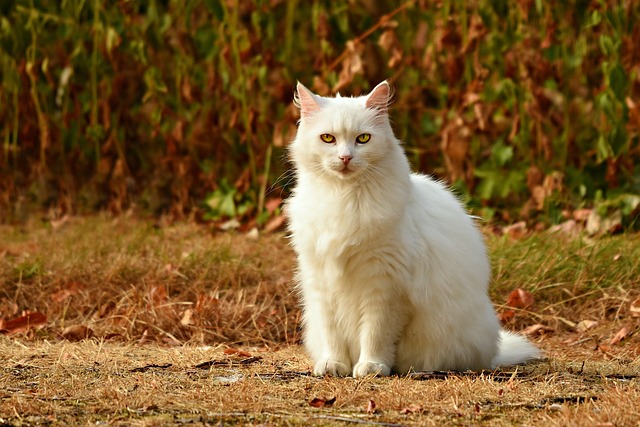
Flashlights for outdoor guides and instructors are essential tools for nighttime wildlife observation, offering a balance between high-intensity illumination and minimal disturbance to animals. These flashlights must have superior beam distance for spotting wildlife, adjustable brightness settings to avoid startling or blinding the animals, and advanced features such as energy-efficient components and smart power management systems for extended operational time. They should be durable, reliable, and equipped with accessories like lens filters, high-capacity rechargeable batteries, and protective cases to withstand various environmental conditions. Diffusers or red lens options can help preserve night vision and reduce light pollution. The right accessories, including lanyards, grip enhancements, and quick-attach clips or carabiners, ensure that the flashlight system is adaptable and ready for any fieldwork scenario. These high-performance lighting solutions are critical for ethical wildlife viewing, educational experiences, and ensuring safety during outdoor excursions under Flashlights For Outdoor Guides And Instructors guidelines.
Exploring the natural world after dark offers a unique perspective on wildlife, revealing behaviors and species that remain elusive during daylight hours. This article delves into the transformative power of high-intensity beam flashlights, an indispensable tool for outdoor guides and instructors. We will navigate through the critical features that distinguish top-tier flashlights for nighttime wildlife observation, emphasizing strategies for ethical illumination and the science behind optimal visibility. From battery longevity to selecting the right accessories, understanding these elements ensures both effective spotting of nocturnal creatures and minimal disruption to their natural habitat. Join us as we shine a light on the best practices for using high-intensity beams in wildlife viewing, enhancing the experience for both guides and nature enthusiasts alike.
- Mastering Nighttime Wildlife Observation with Advanced Flashlights
- The Role of High-Intensity Beams in Enhancing Visibility for Outdoor Guides
- Key Features to Look for in Flashlights for Effective Spotting of Nocturnal Animals
- Strategies for Ethical and Non-Intrusive Use of High-Intensity Lighting in Wildlife Viewing
- The Impact of Beam Distance and Brightness on Wildlife Detection at a Glance
- Battery Life and Power Efficiency: A Critical Aspect in Flashlights for Outdoor Activities
- Selecting the Right Accessories to Complement Your High-Intensity Beam Flashlight for Optimal Performance
Mastering Nighttime Wildlife Observation with Advanced Flashlights

Mastering nighttime wildlife observation requires a blend of patience, stealth, and the right toolkit. Among these essential tools are advanced flashlights, which serve as indispensable instruments for outdoor guides and instructors. These high-intensity beam flashlights have revolutionized the way nocturnal animals are observed in their natural habitats. They provide a focused light that minimizes disturbance to wildlife, allowing observers to study animal behaviors without the risk of causing harm or stress through overexposure to bright lights. The adjustable intensity settings of these flashlights enable users to choose the optimal illumination level for each situation, whether it’s for scanning large areas or finely inspecting distant subjects.
For outdoor guides and instructors dedicated to wildlife observation, the utility of such flashlights extends beyond their brightness capabilities. They are ergonomically designed to be comfortable for extended use, with features like variable focus, multiple modes, and long-lasting batteries that ensure a seamless experience. Additionally, the advanced technology behind these flashlights often includes diffusers or lenses that create a softer light, further reducing the impact on nocturnal creatures. This not only enhances the observational experience but also contributes to conservation efforts by ensuring minimal disruption to animal activity patterns. Flashlights For Outdoor Guides And Instructors are therefore more than just lighting devices; they are pivotal tools in the practice of responsible wildlife observation and education, enabling a closer connection with nature under the veil of darkness.
The Role of High-Intensity Beams in Enhancing Visibility for Outdoor Guides

High-intensity beams have revolutionized the way outdoor guides and instructors navigate and spot wildlife in their natural habitats. The advanced technology behind modern flashlights for outdoor guides, equipped with high-intensity discharge (HID) or light-emitting diode (LED) lighting, offers unparalleled visibility during nighttime expeditions or in low-light conditions. These powerful flashlights serve as essential tools, enabling guides to illuminate distant subjects without the need for artificial lighting structures. The focused beams can reach impressive distances, penetrating dense foliage or nocturnal environments, and revealing hidden creatures with clarity that was once only possible through large spotlights. This capability not only enhances the guide’s ability to locate and identify wildlife but also provides a non-invasive method of observing animals in their ecosystems, ensuring minimal disruption to their natural behavior. As such, high-intensity beam flashlights are indispensable for outdoor guides who seek to deliver immersive experiences while maintaining the integrity of the environment they are exploring. The durability and versatility of these flashlights make them a staple in the arsenal of any professional guide or instructor venturing into the great outdoors, guaranteeing that their group’s safety is never compromised, and every nocturnal splendor is revealed in full detail.
Key Features to Look for in Flashlights for Effective Spotting of Nocturnal Animals

When selecting flashlights for effective spotting of nocturnal animals, particularly for outdoor guides and instructors, several key features stand out as essential for optimal performance. Firstly, lumens output is a critical factor; high-intensity beams are necessary to penetrate the darkness and illuminate areas where wildlife might be present. A flashlight with a minimum of 500 lumens can provide sufficient brightness to spot animals without overpowering them or causing unnecessary stress. Additionally, LED technology is preferable due to its durability, long-lasting light output, and energy efficiency. It’s also beneficial to have a variable beam intensity that allows for adjustments between flood and spotlight modes, offering versatility in different environments and distances.
Secondly, consider the flashlight’s battery life and power source. For extended excursions into the wild where nocturnal wildlife observation is key, rechargeable batteries or high-capacity disposable ones are a must. Some models offer energy-saving modes that extend runtime without compromising on brightness. Furthermore, weatherproof and waterproof designs ensure these tools can withstand the elements, which is crucial for outdoor guides and instructors who operate in diverse conditions. The beam focus should also be adjustable, as it enables users to switch between long-distance scanning and close-up inspection seamlessly. Lastly, ergonomic design and a secure grip are important for handling the flashlight with one hand during nighttime activities, making it a reliable companion for wildlife spotting under the stars. Flashlights designed with these features in mind are indispensable tools for outdoor guides and instructors who wish to provide their clients with unforgettable experiences while ensuring minimal disturbance to the natural environment.
Strategies for Ethical and Non-Intrusive Use of High-Intensity Lighting in Wildlife Viewing

High-intensity beams play a pivotal role in wildlife viewing, offering outdoor guides and instructors an effective tool to illuminate nocturnal environments while maintaining ethical practices that do not disturb or intrude upon wildlife. To ensure the responsible use of these powerful lighting tools, it is crucial to adopt strategies that minimize impact on animal behavior. Firstly, guides should utilize low-intensity settings when possible, as this can reduce the intensity of light directed at wildlife, thus diminishing any potential for disorientation or stress. Secondly, the directionality of flashlights for outdoor guides and instructors should be optimized to focus the beam where it is needed, such as on a trail ahead, rather than sweeping across an area where animals might reside. By doing so, the light’s presence remains unnoticed by most wildlife, allowing for natural behaviors to continue undisturbed. Additionally, guiding techniques should emphasize indirect lighting methods, like using reflective devices or diffusers, to scatter the light and further mitigate its effects on animal visibility. These practices enable outdoor educators to enhance their ability to navigate and observe wildlife without compromising the integrity of the natural environment or the well-being of the animals being viewed. Flashlights For Outdoor Guides And Instructors are not merely instruments for lighting but are integral tools that, when used with consideration and skill, can provide unparalleled opportunities for wildlife appreciation while upholding ethical standards.
The Impact of Beam Distance and Brightness on Wildlife Detection at a Glance

The efficiency of a high-intensity beam in spotting wildlife hinges significantly on both its distance capability and brightness level. When it comes to beam distance, the ability of flashlights for outdoor guides and instructors to illuminate areas at a great range is crucial for detecting nocturnal or elusive species. A longer beam distance allows users to scout broader environments without the need to physically move closer, thus minimizing disturbance to wildlife. This non-invasive approach is particularly valuable in sensitive ecosystems where human presence could otherwise alter animal behavior.
Conversely, the brightness of the beam is equally important for clarity and detail when observing wildlife. High-intensity flashlights for outdoor guides and instructors often feature adjustable brightness settings, enabling users to tailor the light output to their specific needs. A brighter beam can penetrate denser environments or reveal camouflaged animals more effectively. However, excessive brightness might startle or blind wildlife, leading to suboptimal detection conditions. Therefore, guides and instructors must balance the brightness for optimal illumination that neither compromises their vision nor disturbs the animals being observed. Flashlights with adaptable settings become indispensable tools in this regard, offering a versatile solution for various environmental and wildlife conditions.
Battery Life and Power Efficiency: A Critical Aspect in Flashlights for Outdoor Activities

When embarking on outdoor expeditions, especially at night or in low-light conditions, the reliability of a flashlight is paramount for both guidance and wildlife observation. High-intensity beams are essential tools for guides and instructors who navigate diverse terrains and require power sources that can endure extended use without fail. Battery life and power efficiency stand as critical aspects in selecting the ideal flashlights for outdoor activities, particularly when venturing into remote areas where recharging options may be scarce. Advanced LED technology has significantly improved the light output and energy efficiency of modern flashlights, offering longer battery lifespans and brighter illumination, which are indispensable for spotting wildlife in its natural habitat. Flashlights For Outdoor Guides And Instructors must prioritize these features to ensure that their instruments remain operational throughout multi-day excursions or unexpected overnight adventures.
Moreover, the integration of energy-efficient components and optimized power management systems in flashlights not only extends their operational time but also reduces the frequency of battery changes or replacements. This is particularly important for guides and instructors who rely on these tools to educate and lead groups safely through varied environments. The choice between disposable batteries and rechargeable ones must be made with consideration of the expected use case; while rechargeables are eco-friendlier and cost-effective in the long run, they may not always provide the same immediate power as their disposable counterparts. Flashlights For Outdoor Guides And Instructors should be equipped with either high-capacity batteries or easy access to charging solutions to guarantee that their lighting equipment is ready for use whenever needed. The ability to maintain a consistent and powerful beam without frequent battery changes is a testament to the technological advancements in flashlight design, making them indispensable tools for outdoor enthusiasts and professionals alike.
Selecting the Right Accessories to Complement Your High-Intensity Beam Flashlight for Optimal Performance

When selecting accessories for your high-intensity beam flashlight, it’s crucial to consider the environments and tasks for which it will be used, particularly when outdoor guiding or instructing is involved. For instance, a sturdy lanyard can provide an additional grip and prevent the flashlight from being dropped in challenging terrains. Lens filters are another valuable accessory; they can protect the lens from scratches and impact while also enhancing visibility by reducing glare or providing color enhancements that aid in wildlife spotting. Additionally, choosing the right type of battery, such as rechargeable ones with high capacity, ensures longevity and reliability during extended outdoor activities. Flashlights For Outdoor Guides And Instructors should be complemented with accessories like diffusers or red lens options for night operations, minimizing light pollution and preserving natural night vision.
Furthermore, the selection of a durable case or holster cannot be understated, as it protects your flashlight from environmental factors such as dust, moisture, and impact. Clips and carabiners can be attached to packs or belts for easy access, which is essential when quick deployment of the light source is necessary. Grip enhancements, like rubber over-moldings or textured sleeves, can also be beneficial in maintaining a secure hold on the flashlight during adverse weather conditions or when hands are sweaty or cold. Incorporating these accessories into your outdoor gear as part of Flashlights For Outdoor Guides And Instructors will enhance the performance and versatility of your high-intensity beam flashlight, ensuring that you are prepared for any situation encountered in the field.
In concluding, the advent of high-intensity beam flashlights has revolutionized the way outdoor guides and instructors observe nocturnal wildlife, offering a non-intrusive approach to enhance visibility during nighttime excursions. Key features such as optimal brightness, extended battery life, and strategic accessory compatibility are paramount in ensuring effective spotting without compromising the animals’ natural behavior. By adhering to ethical practices and leveraging advanced technology, these flashlights empower professionals to provide unparalleled wildlife viewing experiences while maintaining the integrity of the environments they explore. For those dedicated to outdoor guiding and instruction, investing in a high-intensity beam flashlight equipped with these features is not just beneficial—it’s an essential tool for their trade.







